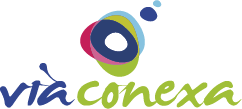
As a result of years of experience coupled with our desire for continuous improvement, it has led us to create our own unique way of teaching. We have broken this down for your into 4 main areas:
Our main objectives:
- Ensure you have a positive, enjoyable learning experience.
- Make sure your progress is the best.
- Ensure you meet your goals in the most enjoyable way possible whilst still ensuring your fluency in the language.
We like to have a more holistic and alternative approach to learning, where we don’t just place all of our emphasis on the communication aspect, but we also like to incorporate the emotive and psychological needs of our students to get them learning at the best pace for themselves.
This approach also considers the following:
- We look at the students individual needs and use a mixture of techniques which are the most suitable for each student, enabling their progression quickly and meeting their objectives.
Our teachers have a facilitating role, and are very knowledgeable about a variety of methodologies, and so are able to adapt and help the students learn in the most natural and fluid way. Constantly enhancing student’s abilities to communicate.
We also monitor the students learning closely with regular evaluations on their progress.
And in the following actions:
- We try our very best to make sure we have the most relaxing environment possible in order to reduce an anxiety our students may have. We also have a policy of respect each other learning abilities and pace of learning.
All of the staff at Via Conexa like to pay attention to any students who may suffer anxiety at frustrating situations where they cannot find the right words to say. We like to make sure that these students are placed in the most relaxing of atmospheres to ensure that they can get help, not to be embarrassed, but instead be motivated and captivated… using a variety of techniques.
We understand that every person is different on any given day! We understand our students don’t always have the same energy or enthusiasm every day, or even the same sense of humour! This is why it is important to us to really get to know what makes our students tick… and adapt to their needs!
We encourage a slower paced environment.
What do we mean by that? Well to put simply: Doing things at a slower pace equals quality over quantity. We like to be serene, careful, receptive, intuitive, deliberate, patient, and reflective. We like to provide balance by adapting to everyone’s needs and paces, and actively listening to our students.
We periodically organize pedagogical sessions for the creation of resources, activities and didactic techniques, and for reflection, self-criticism and revision of our teaching practise. We take our work seriously and with enthusiasm.
Our aim is to design dynamic, active classes, adapted to each student, in a friendly, motivating and pleasant atmosphere.
The class is the framework where you will learn; it must be perfectly designed and fit into a plan where all the linguistic aspects that you must master are contained.
How do we create this solid foundation?
We constantly evaluate your learning skills, your progression, and overall satisfaction with the school.
Your teacher will provide you with the necessary tools with which to constantly widen your vocabulary, improve your grammar and get you moving from the basics to fluently speaking your chosen language.
We do this using visual support with images, keywords, and important phrases. We feel this encourages fluency in the early stages to allow the students to take on much vocabulary which they can use more and more to build up more complex sentences and structures.
We aim to try and use different activities to help students who learn in different ways, so if a student is struggling to grasp a concept, they can try different methods until they find one they like. This helps to reduce anxiety in our students, and also keeps the classes interesting rather than trying to repeat the same thing in the same way. These activities also encourage teamwork to build rapport and relationships within the student body. It also encourages the intake of knowledge, as sometimes it is necessary to come into contact with certain key words in a language many times before you can use them fluently.
Some of our activities include: information searches, resolution of fictitious problems, which the student must learn to solve… constantly pushing their learning curve by forcing you to use all of the vocabulary and learning to structure it in different ways… again reinforcing what you have learned and gently swaying the students to be more and more fluent.
The activities will all be balanced so you can enhance both your written and oral skills at the same pace and according to your needs.
We only select teaching materials which we deem the best quality, and we also suport them with our own materials.
We attach special importance to the learning of vocabulary, an often forgotten aspect. Good vocabulary management allows a high level of communication.
Whether in total immersion or not, the more senses involved in learning, the better it is. We use audiovisual materials for a complete learning experience.
Generally:
We are convinced that by learning in a classroom, which has a pleasant, relaxed atmosphere, students are able to take in new concepts, and keep them in their memory for longer. We use good humour and specific games to get this!
We consider the classroom a ‘living’ environment, where students have a safe space with which to ask questions, be curious, and want to take their learning experience further.
Just understanding new structures is not enough, we want students to start using their new language skills and apply them to everyday situations in order to be able to speak to natives. We do this via role play tactics in the classroom where your teacher will let you know all about the culture associated with the language, and any pitfalls you will want to avoid (where parts of a language are difficult to translate, or may offend the natives!).
- Qualified professionals (mostly natives).
Identified and committed to the teaching style of the school.
Committed to building excellent human relationships, who love their work and strive to achieve the best possible results for students.
With a positive attitude, always searching to get the best outcome for you.
- Mission statement:
- Providing you with the necessary tools, so that you can build up your learning significantly and in the most satisfactory way.
- Providing dynamic classes in a stimulating and creative environment.
- Facilitating the maximum absorption and acquisition of the language.
- Constantly guiding your learning; advising and supporting as you need.
- They are aware that the most important role is yours.
They use only the language you are learning in the classes (immersion courses) or alternated with your mother tongue language, only when necessary (usually for beginner levels) depending on the type of course and student needs.
Always creative (making up stories and role playing).
- They look after a positive learning experience.
- They identify with the style of the center and adhere to our principles or “decalogue of teaching practise”.
They are aware of the importance of their linguistic model: generally natives, our teachers try to provide linguistic models appropriate to your level and style, that help you acquire new structures and progress much more easily.
- We seek the pedagogical value of error. Error is not a problem if the message can be understood; it is part of the learning process and it is the reflection of the learner’s efforts to approach the native language model with which he comes into contact.
It is as inevitable as necessary, to make certain mistakes during this process, which allow the learner to make more and more perfect linguistic hypotheses.
Nobody learns without “putting his foot in it”.
In addition, it provides very valuable information to both, the learner and the teacher.
This naturalization of the error is transferred to the atmosphere at the school: relaxed, without criticism, without fears. There is no need to stress: we never stop making mistakes, even in our mother tongue; we are always in continuous improvement.
For those who learn a language, that stage in which their production approaches the model considered “perfect”, receives a name in Spanish: “interlengua“. Further or closer to the model, we are always in that “interlengua”.
- However, not all the errors are the same. Different types of errors require different actions.
Our teachers know which are resistant, which of them could become “fossilized” and which are part of a specific moment in the learning process. They treat each of them in the least invasive way possible.
Our intention is not to stigmatize the learner, not to damage his self-esteem. An abrupt correction or repetitive corrections cut off spontaneity and the wish for expression.
Even silence and reflection deserve respect and are a good opportunity to encourage the student to choose among the various linguistic possibilities available to transmit a message.
We ensure that the corrections are clear, respectful, appropriate and oriented to be a useful tool for learning. Fluent and natural corrections; for example, providing the right forms through questions or through reformulations.
We stimulate error detection and self-correction.
- We promote, in short, a positive attitude towards errors.

